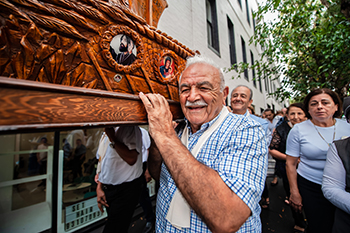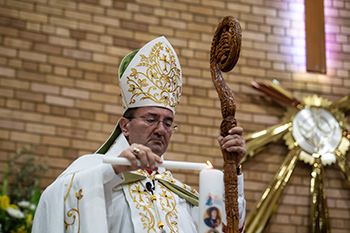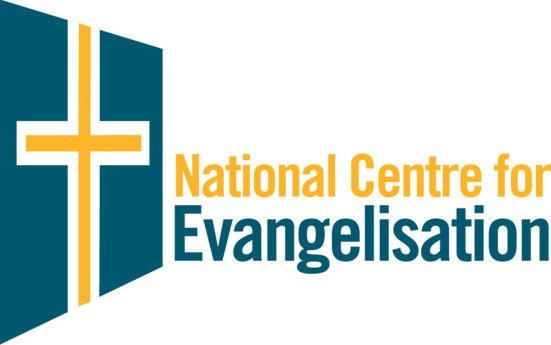One of the fastest-growing Catholic dioceses in the country, the Maronite Eparchy of Australia has concluded its Golden Jubilee celebrations, after almost a year of sharing its gifts and traditions with the Church in Australia.
While 2023 marked 50 years since the establishment of the Maronite Eparchy of St Maroun, there has been a Maronite presence in Australia for much longer, according to the Eparchy’s Bishop Antoine-Charbel Tarabay OLM.
“Although the Maronites have been in Australia for as much as 170 years, the Golden Jubilee of the official establishment of the Maronite Eparchy here was an opportunity to show gratitude for as well as celebrate all that has been achieved,” he said.
Since opening the Golden Jubilee celebrations on February 9 – the feast of St Maroun – the Eparchy has hosted several major events in various parts of Australia to mark the occasion.
 “One of the highlights has been the spiritual experience of bringing the relics of all the Maronite saints – Maroun, Charbel, Rafqa and Nehmetallah – with the relics of Australia’s St Mary of the Cross MacKillop, to all Maronite parishes and organisations for a welcome and for their veneration,” Bishop Tarabay said.
“One of the highlights has been the spiritual experience of bringing the relics of all the Maronite saints – Maroun, Charbel, Rafqa and Nehmetallah – with the relics of Australia’s St Mary of the Cross MacKillop, to all Maronite parishes and organisations for a welcome and for their veneration,” Bishop Tarabay said.
“A major highlight was the visitation of His Beatitude and Eminence Mar Bechara Boutros Cardinal Rai, Patriarch of Antioch and all the East, to Melbourne and Sydney in September.
“An unforgettable moment was having our Patriarch celebrate the Golden Jubilee Mass of our Eparchy at Ken Rosewall Arena, with over 7,000 Maronites in attendance.”
It has been a particularly fruitful year for the Maronites, with 11 ordinations (five subdeacons, three deacons and three priests) taking place around the country and two churches and one chapel consecrated and opened, including the first Maronite church in Western Australia. There are now 20 Maronite churches and chapels in Australia and 57 priests.
Bishop Tarabay said while the Jubilee Year had been a great source of grace for Maronite Catholics in Australia, a wider evangelisation impact has also been observed.
“The Jubilee Year events, especially the relics tour, were planned to provide spiritual, community and educational experiences not only for our parishioners, but also for their families, friends and the broader community,” he said.
“All these have served as a platform to showcase the richness of Maronite traditions, liturgy and spirituality, capturing the interest of those who might be less familiar with the Maronite Church but also those who may not attend Mass regularly.”
In comparison to the Latin Rite or Western Church, the Maronite liturgy traces its roots back to the early Christian community in Antioch. The liturgy is celebrated in Syriac, an ancient form of Aramaic, and it is often used in hymns, prayers and liturgical texts.
“Further, Maronite spirituality places a strong emphasis on the Paschal Mystery and the liturgical calendar recounts the events of the fulfilment of the plan of salvation in the birth of Christ, the restoration of man during Lent, the birth of the Church during Pentecost and the awaited eschatological fulfilment of the second coming and the kingdom of God.”
In the Maronite Eparchy, the liturgical year commences on the first Sunday in November with Consecration of the Church, and throughout the liturgical calendar there is a focus on forming the faithful into “holy temples for the Lord”, Bishop Tarabay explained.
“The Maronite Church also has a strong monastic tradition,” he said. “The monks and monasteries play a vital role in preserving and transmitting the spiritual heritage of the Maronite community.
“It’s also important to highlight that the Maronite Church is a Marian Church. The blessed mother occupies an honoured place in the liturgy where she is known as Yoldat Aloho, the Mother of God (Theotokos).”
In the lead-up to and throughout the Christmas season, the Maronite Eparchy celebrates nine major feasts which recall the many and varied “ways in which God answers prayer… and how He plans all things according to His Divine Will, completely independent of our own limitations and expectations”:
- The Announcement to Zechariah
- The Announcement to Mary
- The Visitation of the Virgin to Elizabeth
- The Birth of John the Baptist
- The Revelation to St Joseph
- Genealogy Sunday
- The Glorious Birth of the Lord
- Sunday of the Presentation of the Lord in the Temple
- The Circumcision of Our Lord, New Year’s Day
Bishop Tarabay said there was much that Latin Rite and Eastern Catholics could learn from each other.
“In the Eastern Church the faithful are very much attached to their faith traditions and heritage, and these are an intrinsic part of their identity and life,” he said.
“There is also a strong emphasis on communal worship, fostering a sense of unity and shared spiritual journey. This is very much evident in our youth, who play a very active role in the Church and community, which is also critical to preserving and promoting our liturgical practices and traditions.”
 The 2021 Social Profile of the Catholic Community in Australia showed that the number of Maronite Catholics in Australia had increased by 29 per cent since 2016, and that around 45 per cent of Maronite Catholics are aged under 30. Bishop Tarabay said the community is “young, vibrant and growing”, with about 2,000 Maronite baptisms and confirmations taking place each year on average.
The 2021 Social Profile of the Catholic Community in Australia showed that the number of Maronite Catholics in Australia had increased by 29 per cent since 2016, and that around 45 per cent of Maronite Catholics are aged under 30. Bishop Tarabay said the community is “young, vibrant and growing”, with about 2,000 Maronite baptisms and confirmations taking place each year on average.
“This means it is imperative that we cast our gaze toward the future to ensure the needs of our faithful are met. This involves the establishment of more churches, more schools and expanding educational institutions, and developing additional facilities to cater to the diverse needs of our community, such as aged care homes,” he said.
“Our commitment to the future also necessitates a focus on fostering vocations to the priesthood and religious life within our community. And so we must also pray to the Lord of the harvest to raise more men and women to the service of His vineyard.”
Bishop Tarabay, who was appointed as Bishop of the Maronite Eparchy by Pope Francis in April 2013, said the past 10 years had been “quite the journey”.
“I am thankful to the Lord for all His blessings upon our Eparchy and re-affirm time and time again our determination to continue our mission as the Maronite Church here in this hospitable land,” he said.
Images: Giovanni Portelli
Words: Matthew Biddle



